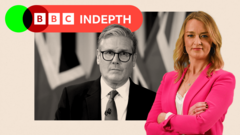The past week has seen a significant upheaval in government, prompting renewed scrutiny over the prime minister’s grip on power. Recent high-profile departures from key governmental roles have sent ripples through the political landscape. While cabinet reshuffles are common, the timing and nature of these latest changes suggest deeper underlying tensions. Such moves are often intended to assert authority or realign policy direction, yet they can inadvertently expose fissures within the administration, raising questions about internal cohesion.
Beyond personnel changes, persistent disagreements within the ruling party have also come to the fore. Reports indicate ongoing friction over critical policy decisions, ranging from economic strategy to social reforms. These internal disputes, whether aired publicly or discussed behind closed doors, contribute to a perception of disunity at the highest levels of government. The challenge for any leader is to manage these differing viewpoints without allowing them to fracture the collective agenda.
Further complicating matters, dissent from the backbenches has grown increasingly vocal. Members of Parliament from the prime minister’s own party have reportedly expressed frustration and dissatisfaction with the government’s direction and leadership style. Instances of parliamentary rebellions or public criticisms from within the party ranks directly challenge the prime minister’s mandate and ability to command loyalty, underscoring the delicate balance required to maintain party discipline.
Collectively, these events—the dismissals, the internal policy battles, and the visible unrest among backbenchers—culminate in a significant challenge to the prime minister’s authority. The ability to lead effectively hinges not only on public support but also on the unwavering confidence of one’s own party and cabinet. When this internal support appears fractured, the prime minister’s capacity to deliver on their agenda and maintain control over the political narrative becomes inherently compromised. As the political week draws to a close, the focus remains firmly on how the prime minister intends to reassert command and unify a seemingly divided administration amidst mounting pressure.



